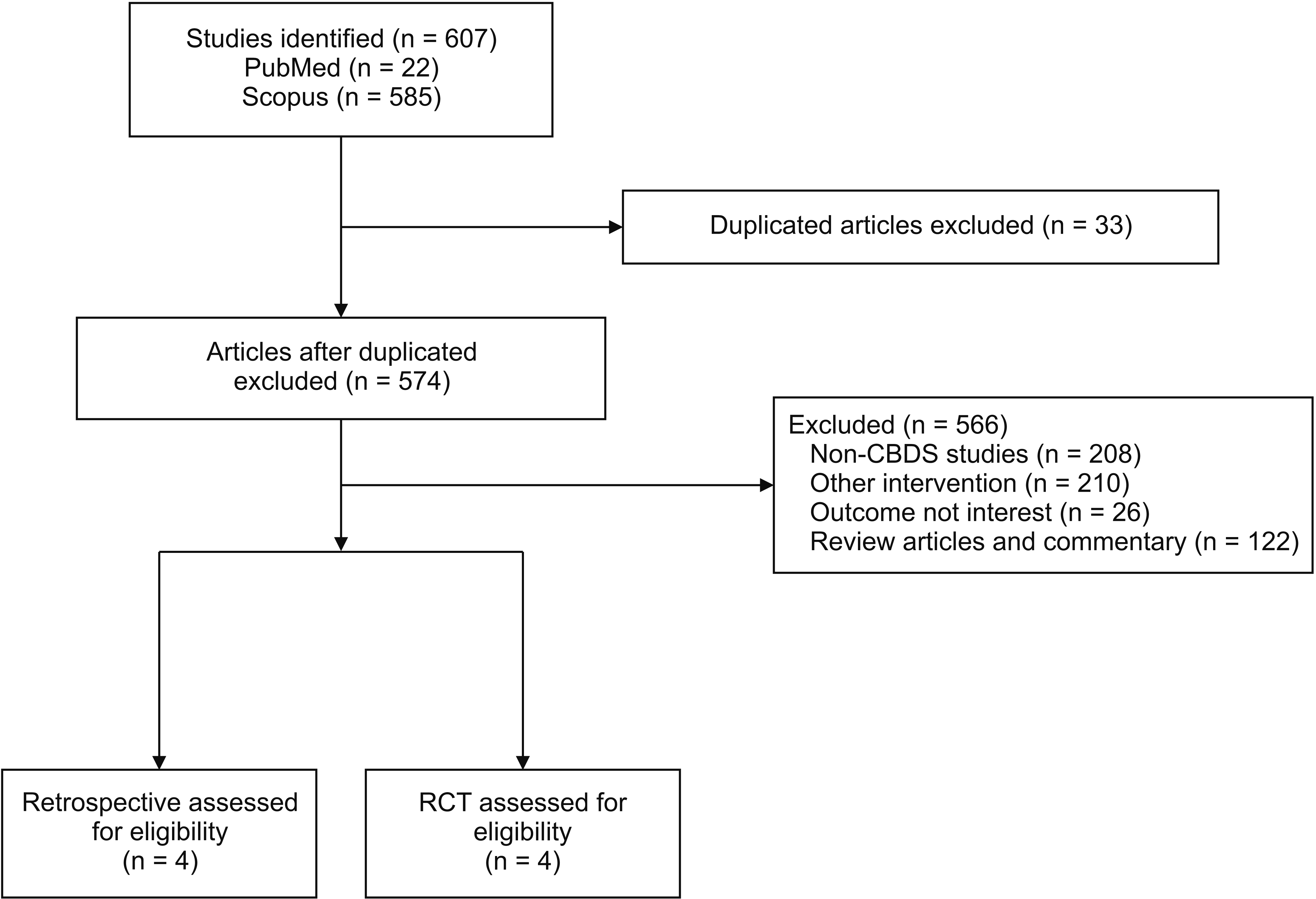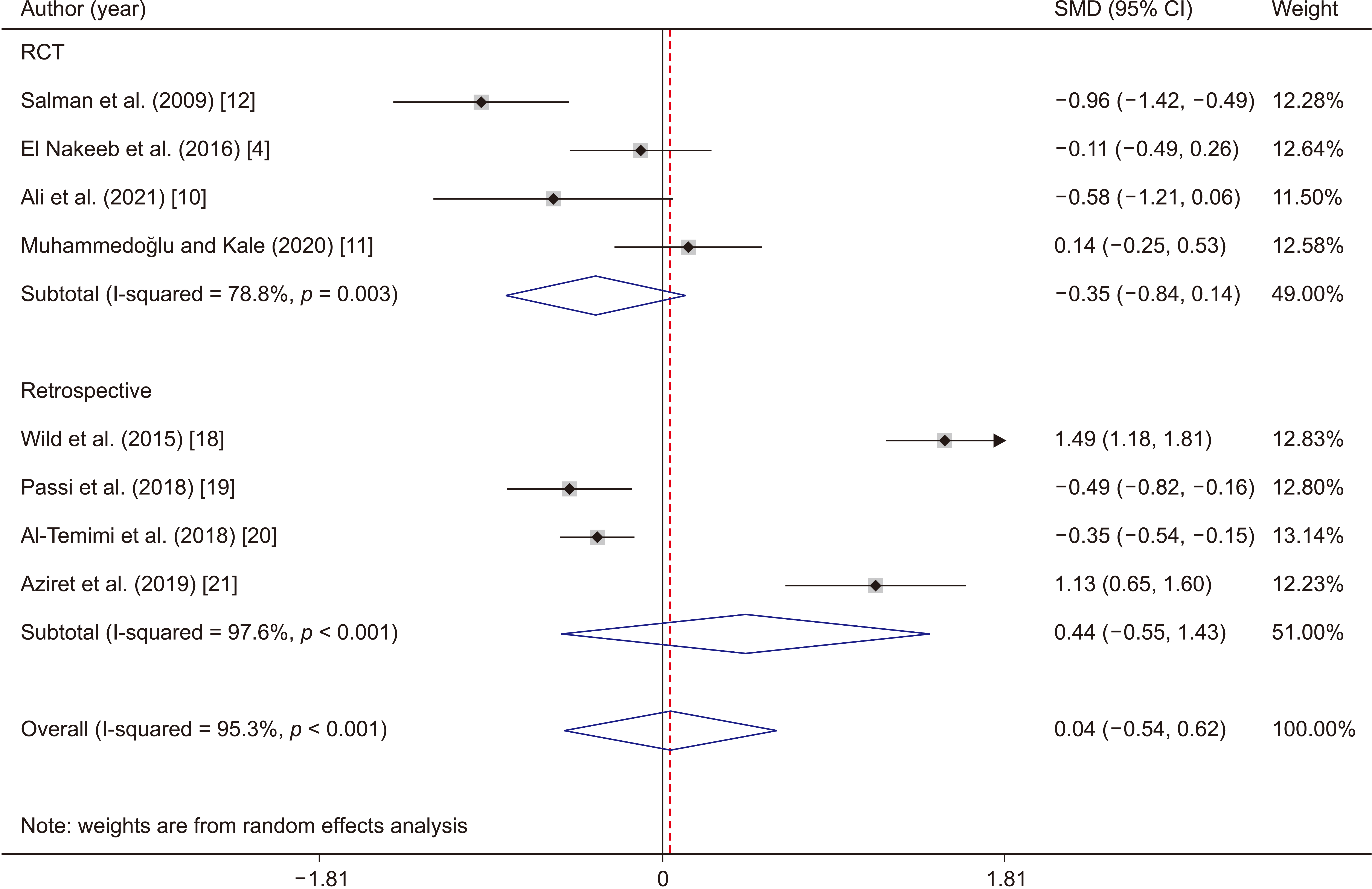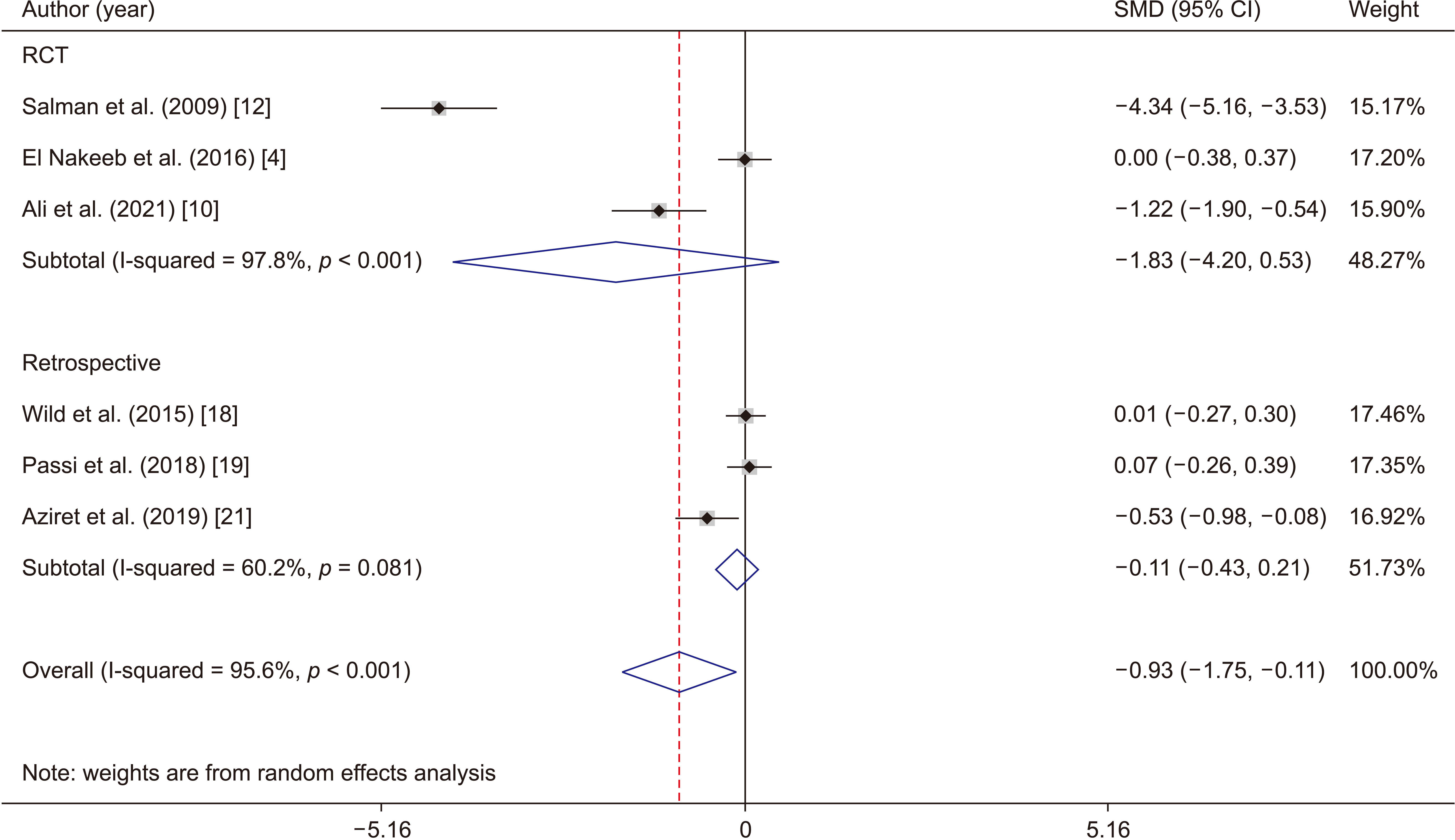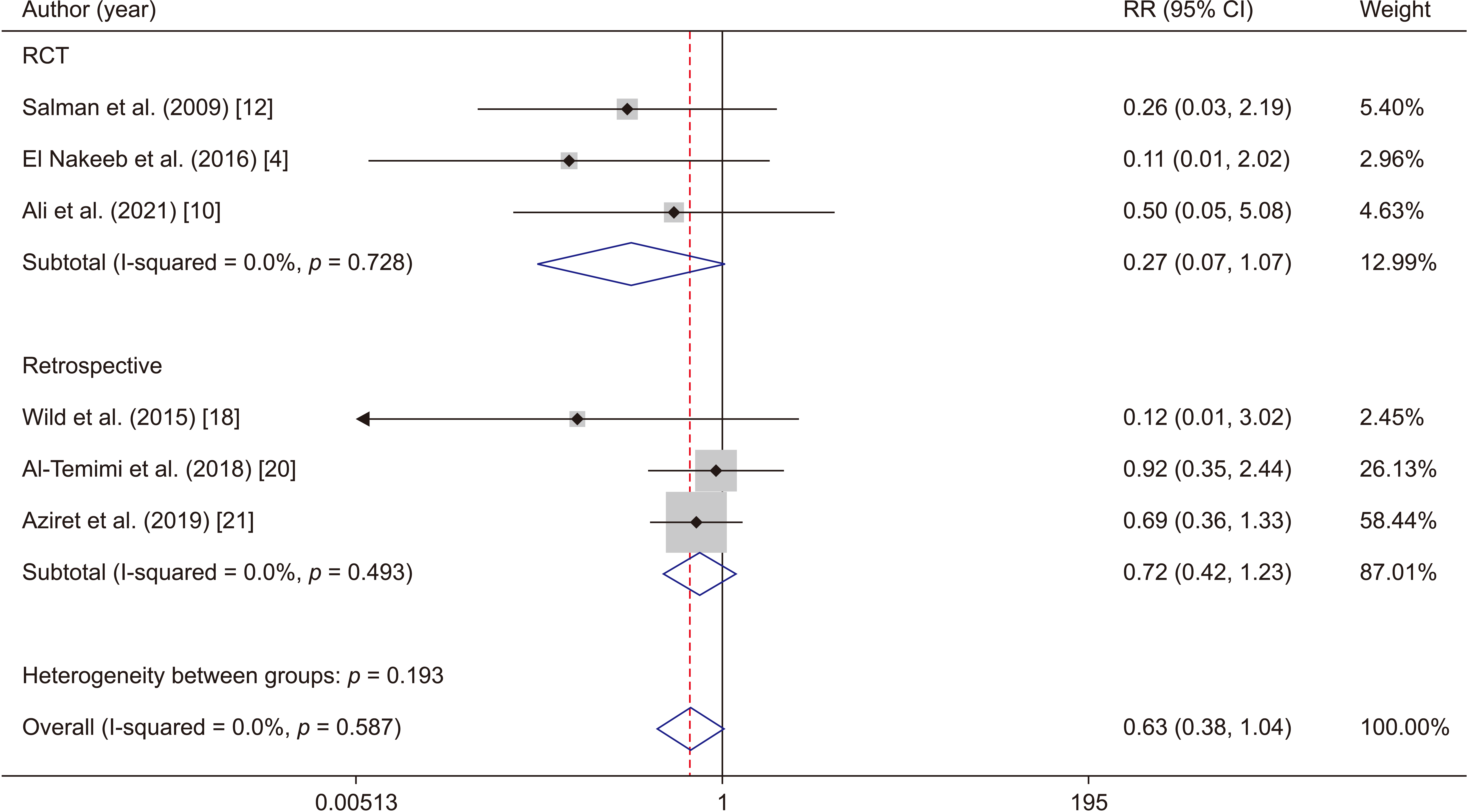1. Koc B, Karahan S, Adas G, Tutal F, Guven H, Ozsoy A. 2013; Comparison of laparoscopic common bile duct exploration and endoscopic retrograde cholangiopancreatography plus laparoscopic cholecystectomy for choledocholithiasis: a prospective randomized study. Am J Surg. 206:457–463. DOI:
10.1016/j.amjsurg.2013.02.004. PMID:
23871320.

2. Fink AS. 1993; Current dilemmas in management of common duct stones. Surg Endosc. 7:285–291. DOI:
10.1007/BF00725941. PMID:
8351597.

3. Schwab B, Hungness ES, Soper NJ. Yeo CJ, editor. 2019. Management of common bile duct stones. Shackelford’s Surgery of the Alimentary Tract. 8th ed. Philadelphia: Elsevier;p. 1286–1293.

4. El Nakeeb A, Ezzet H, Askar W, El Hanafy E, Hamdy E, Atef E, et al. 2016; Early versus late cholecystectomy after clearance of common bile duct stones by endoscopic retrograde cholangiopancreatography: a prospective randomized study. Surg Laparosc Endosc Percutan Tech. 26:202–207. DOI:
10.1097/SLE.0000000000000265. PMID:
27213785.

5. Esber EJ, Sherman S. 1996; The interface of endoscopic retrograde cholangiopancreatography and laparoscopic cholecystectomy. Gastrointest Endosc Clin N Am. 6:57–80. DOI:
10.1016/S1052-5157(18)30378-7.

6. Fulcher AS. 2002; MRCP and ERCP in the diagnosis of common bile duct stones. Gastrointest Endosc. 56(6 Suppl):S178–S182. DOI:
10.1067/mge.2002.129029. PMID:
12447264.

7. Sarli L, Iusco DR, Roncoroni L. 2003; Preoperative endoscopic sphincterotomy and laparoscopic cholecystectomy for the management of cholecystocholedocholithiasis: 10-year experience. World J Surg. 27:180–186. DOI:
10.1007/s00268-002-6456-8. PMID:
12616433.

8. Lakatos L, Simon L, Mester G, Réti G, Nagy A, Lakatos PL. 2004; [Selection criteria for preoperative endoscopic retrograde cholangiopancreatography before laparoscopic cholecystectomy. Results of a 7-year, retrospective, single center study]. Orv Hetil. 145:1553–1559. Hungarian.
9. Förster S, Klar E. 2008; [Common bile duct stones. Diagnostic and therapeutic management]. Chirurg. 79:881–892. German. DOI:
10.1007/s00104-008-1588-5. PMID:
18719863.
10. Ali RF, Aouf A, Isamil K, Ismail T, Elbatae H. 2021; Randomized controlled clinical trial of early vs delayed laparoscopic cholecystectomy after CBD stone clearance. Indian J Surg. 83:1158–1165. DOI:
10.1007/s12262-020-02607-y.

11. Muhammedoğlu B, Kale IT. 2020; Comparison of the safety and efficacy of single-stage endoscopic retrograde cholangiopancreatography plus laparoscopic cholecystectomy versus two-stage ERCP followed by laparoscopic cholecystectomy six-to-eight weeks later: a randomized controlled trial. Int J Surg. 76:37–44. DOI:
10.1016/j.ijsu.2020.02.021. PMID:
32105889.

12. Salman B, Yilmaz U, Kerem M, Bedirli A, Sare M, Sakrak O, et al. 2009; The timing of laparoscopic cholecystectomy after endoscopic retrograde cholangiopancreaticography in cholelithiasis coexisting with choledocholithiasis. J Hepatobiliary Pancreat Surg. 16:832–836. DOI:
10.1007/s00534-009-0169-4. PMID:
19701600.

13. Reinders JS, Goud A, Timmer R, Kruyt PM, Witteman BJ, Smakman N, et al. 2010; Early laparoscopic cholecystectomy improves outcomes after endoscopic sphincterotomy for choledochocystolithiasis. Gastroenterology. 138:2315–2320. Erratum in: Gastroenterology 2011;140:1361. DOI:
10.1053/j.gastro.2010.02.052. PMID:
20206179.

14. McAlister VC, Davenport E, Renouf E. 2007; Cholecystectomy deferral in patients with endoscopic sphincterotomy. Cochrane Database Syst Rev. 2007:CD006233. DOI:
10.1002/14651858.CD006233.

15. Ghazanfor R, Malik S, Tariq M, Changeez M, Malik J, Ghazanfor KR, et al. 2020; Impact of endoscopic retrograde cholangiopancreatography on laparoscopic cholecystectomy. J Islamabad Med Dental Coll. 9:48–53. DOI:
10.35787/jimdc.v9i1.383.

16. Sterne JA, Hernán MA, Reeves BC, Savović J, Berkman ND, Viswanathan M, et al. 2016; ROBINS-I: a tool for assessing risk of bias in non-randomised studies of interventions. BMJ. 355:i4919. DOI:
10.1136/bmj.i4919. PMID:
27733354. PMCID:
PMC5062054.

17. Higgins JPT, Green S. 2011. Cochrane handbook for systematic reviews of interventions version 5.1.0 [updated March 2011]. The Cochrane Collaboration;Chichester:
18. Wild JL, Younus MJ, Torres D, Widom K, Leonard D, Dove J, et al. 2015; Same-day combined endoscopic retrograde cholangiopancreatography and cholecystectomy: achievable and minimizes costs. J Trauma Acute Care Surg. 78:503–507. discussion 507–509. DOI:
10.1097/TA.0000000000000552. PMID:
25710419.
19. Passi M, Inamdar S, Hersch D, Dowling O, Sejpal DV, Trindade AJ. 2018; Inpatient choledocholithiasis requiring ERCP and cholecystectomy: outcomes of a combined single inpatient procedure versus separate-session procedures. J Gastrointest Surg. 22:451–459. DOI:
10.1007/s11605-017-3588-6. PMID:
28971298.

20. Al-Temimi MH, Trujillo C, Shah M, Rangarajan S, Kim E, Chandrasekaran B, et al. 2018; Same-day versus conventional different-day endoscopic retrograde cholangiopancreatography and laparoscopic cholecystectomy: a multi-center retrospective study. Am Surg. 84:1679–1683. DOI:
10.1177/000313481808401029. PMID:
30747694.

21. Aziret M, Karaman K, Ercan M, Vargöl E, Toka B, Arslan Y, et al. 2019; Early laparoscopic cholecystectomy is associated with less risk of complications after the removal of common bile duct stones by endoscopic retrograde cholangiopancreatography. Turk J Gastroenterol. 30:336–344. DOI:
10.5152/tjg.2018.18272. PMID:
30945646. PMCID:
PMC6453651.

22. Takada T. Tokyo Guidelines 2018: updated Tokyo Guidelines for the management of acute cholangitis/acute cholecystitis. J Hepatobiliary Pancreat Sci. 2018; 25:1–2. DOI:
10.1002/jhbp.526. PMID:
29334699.

23. De Santis L. 2013; ERCP and laparoscopic cholecystectomy in a combined (one-step) procedure with a novel technique. BMC Surg. 13:A15. DOI:
10.1186/1471-2482-13-S1-A15. PMCID:
PMC3847213.

24. Bostanci EB, Ercan M, Ozer I, Teke Z, Parlak E, Akoglu M. 2010; Timing of elective laparoscopic cholecystectomy after endoscopic retrograde cholangiopancreaticography with sphincterotomy: a prospective observational study of 308 patients. Langenbecks Arch Surg. 395:661–666. DOI:
10.1007/s00423-010-0653-y. PMID:
20526779.





 PDF
PDF Citation
Citation Print
Print







 XML Download
XML Download